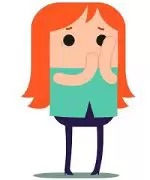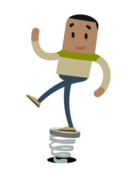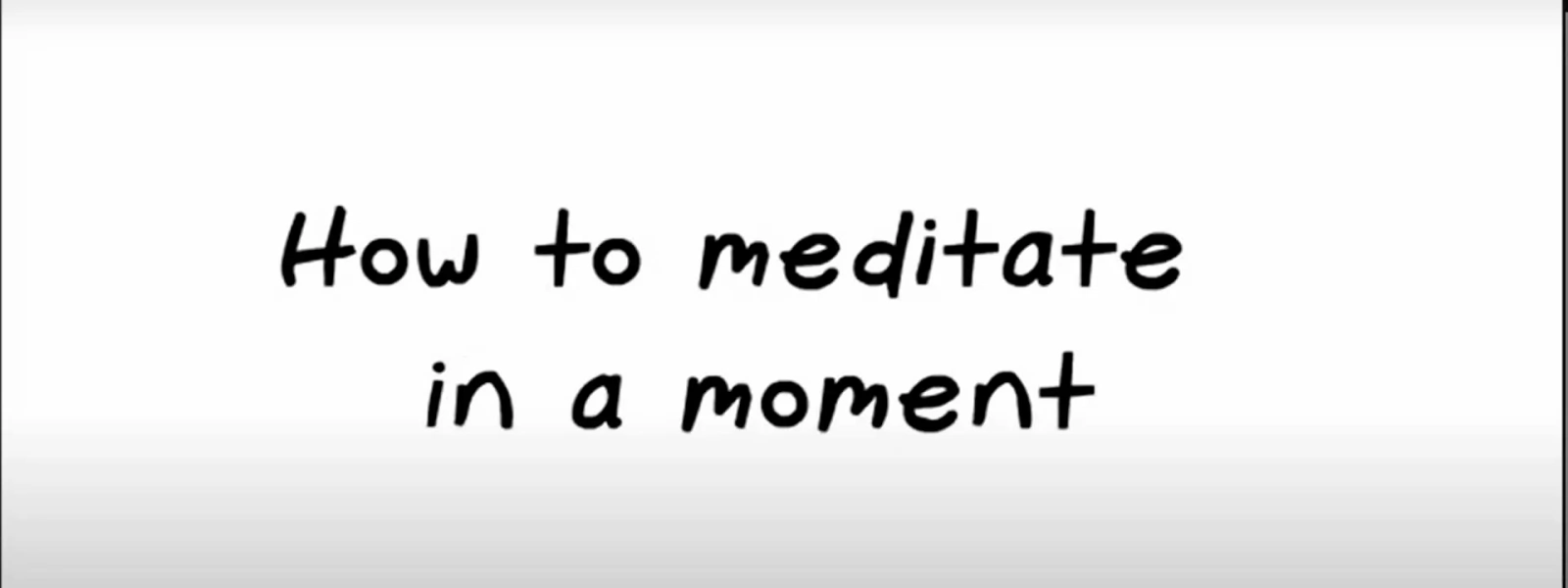
Panic and anxiety
What is it?
Panic is caused by an interaction of two systems; namely external stimuli (things from outside) that trigger fear (associations) and the way you deal with fear (emotion regulation, a combination of thoughts, feelings and behaviours).
Examples:
- Someone points a gun at me (external fear stimulus) and I think "Oh, this is staged, I recognise this situation from a television show where they prank people" (thoughts). This makes me feel curious (feeling) and I want to find out if my assumption is right by shouting "are you from television?". (behaviour).
- Someone points a gun at me (external fear stimuli) and I think "Oh no, a terrorist is about to harm me!" (thoughts). I feel fear coursing through my body (feelings) and as a result I freeze (behaviour).
In these examples, you notice that different thought patterns trigger different feelings and behavior, which in turn stem from past experiences. These, often unconscious thoughts can lead to the feeling of anxiety and or even panic .
Forms of expression when in a state of panic
- Physical: our body reacts intensely during a panic attack. Possible physical sensations include dizziness, hyperventilation, palpitations, sweating, vomiting, feeling of an unrealistic situation, etc. Some may even have the idea that they are experiencing a heart attack;
- Behavioural: avoidance of anxious stimuli;
- Psychological: mulling.
What can you do yourself?
Although hiding/avoiding is a very common response, these problems will often come back at a later time. By avoiding the stimuli, you will maintain your negative association with that stimulus/stimuli. And by doing so it will increase the impact on you. A more helpful strategy is to talk about your feelings with people you trust and seek help. Panic attacks can be treated ed effectively. This may be done by using EMDR. See your general practitioner for a referral to a psychologist. If you are not sure what it is you are experiencing or if you find the step to the general practitioner hard to make, you can schedule an appointment with one of the Fontys student psychologists.
Self-learning module
With your Fontys account, you can make free use of online self-help modules (e-health). Check out the modules related to panic and anxiety below.
Anxiety
If you often feel anxious or have experienced panic attacks, you're not alone. Taking action early is essential to prevent symptoms from worsening. One way to start addressing these issues is by engaging in a self-help module. This module helps reduce or prevent the escalation of symptoms by training you to understand and manage your anxiety and panic.
Go to anxiety and panic module
Living by your values
Do you want to do (more) what is really important to you? Or would you like to discover what that really is? Then this module is for you! In this module, you discover your values and what it takes to live by them more. This will ensure that you do what is important to you. And keep doing it, even when things get difficult.
Go to the self-learning module
Resilience
Could you use some more resilience? Do you sometimes wonder why you react to setbacks in a certain way? Then take this module. In the module you will gain more insight into yourself and why you react the way you do. This is how you build resilience. And that will help you with future setbacks.
Go to the self-learning module
Contact team Student Guidance
- If you would like to discuss your anxiety and/or panic symptoms, make an appointment with a student psychologist.
- If your panic and/or anxiety symptoms are impeding your study progress, make an appointment with a student counsellor.

